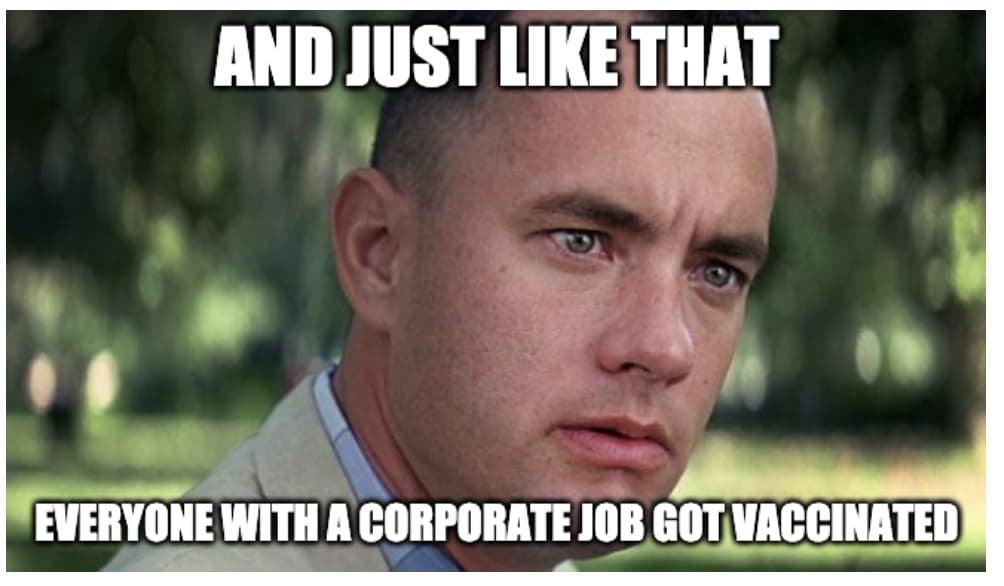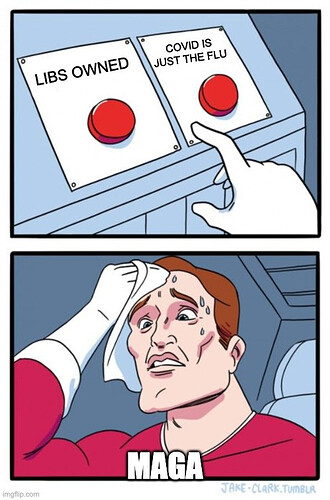That man leaves behind young ones and I and many here will never have a child. Doesn’t that pretty much shit all over Darwin’s little theory?
can anyone help explain this to me in more simple terms?
Authors made a big public splash about waning effectiveness of the vaccine for symptomatic infections. When it came time to publish formally, they dropped that claim stating their data source wasn’t good enough. The reason seems to be what many brought up - that there was no real control for their data, leaving claim really weak.
Note that this criticism applies to Churchill’s link as well. It’s survey data ffs.
appreciate it.
We’re maybe all not gonna die after all.
If you have better data, or better studies, please link.
I’m sure there’s always holes you can pull in any almost real-time study because the controlz you desire aren’t there. If they are, please go forth and do these studies yourself for the benefit of mankind, if nothing else.
With more than 1.2 million test results and participants, this is one of the largest real-life vaccine effectiveness studies on record.
This work builds on our previous analysis of vaccine effectiveness and after effects following the initial vaccine rollout, which we published back in April in the journal Lancet Infectious Diseases.
This time, we analysed data recorded by ZOE COVID Study app contributors who logged their COVID vaccinations between December 8, 2020 and July 31, 2021. We then looked to see whether any of these people reported a positive COVID test result between May 26 this year, when the Delta variant became dominant in the UK , and the end of July.
This analysis included:
- 411,642 test results from users who were doubly vaccinated with the Pfizer mRNA vaccine at the time of the infection
- 709,486 test results from users who were doubly vaccinated with the AstraZeneca vaccine
- 76,051 test results from users who were not yet vaccinated at the time of the infection
We found that initial protection against infection a month after the second dose of the Pfizer vaccine was 88%, while after five to six months this fell to 74%.
For the AstraZeneca vaccine, there was around 77% protection a month after the second dose, falling to 67% after four to five months.
and the 66% estimate was based on a relatively short study period with few infections.
and the 66% estimate was based on a relatively short study period with few infections.
and the 66% estimate was based on a relatively short study period with few infections.
and the 66% estimate was based on a relatively short study period with few infections.
and the 66% estimate was based on a relatively short study period with few infections.
The point is that almost all if not all the data should be taken with a heavy grain of salt. It’s just the nature of the beast currently. The lay press does a horrible job of filtering and assigning certainty to various conclusions.
Pointing this out is necessary. It is part of the scientific process. It shouldn’t be personal or taken personally.
JFC
I think you’ll find we are.
“COVID deaths are being over-counted!” would also have been accepted.
Sounds like it’s a little more handed than the tweet indicates. The way I read it the additions are “presumed” COVID deaths that some outlets/trackers were already including?
Pretty rich coming from the company that created this new variant
They call it b.1.617.2 in their press release. What are they trying to hide? I’m just asking! Why am I not allowed to ask these questions?
Gotta include the most epic monologue ever filmed (extended cut):


